Oep23 forms an ion channel in the chloroplast outer envelope
- PMID: 25849634
- PMCID: PMC4331141
- DOI: 10.1186/s12870-015-0445-1
Oep23 forms an ion channel in the chloroplast outer envelope
Abstract
Background: Metabolite, ion and protein translocation into chloroplasts occurs across two membranes, the inner and the outer envelope. Solute and metabolite channels fulfill very important functions in integrating the organelles into the metabolic network of the cell. However so far only a few have been identified. Here we describe the identification and the characterization of the outer envelope protein of 23 kDa, Oep23 from garden pea.
Results: Oep23 is found in the entire plant lineage from green algae to flowering plants. It is expressed in all organs and developmental states tested so far. The reconstituted recombinant protein Oep23 from pea forms a high conductance ion channel with a maximal conductance in the fully open state of 466 ± 14pS at a holding potential of +100 mV (in 250 mM KCl). The Oep23 channel is cation selective (PK+ : PCl- = 15 : 1) with a voltage dependent open probability of maximal Vmem = 0 mV.
Conclusion: The data indicate that the Oep23 activity represents a single channel unit and does not assemble into a multiple pore complex like bacterial type porins or mitochondrial voltage dependent anion channel. Thus, Oep23 represents a new member of ion channels in the outer envelope of chloroplasts involved in solute exchange.
Figures
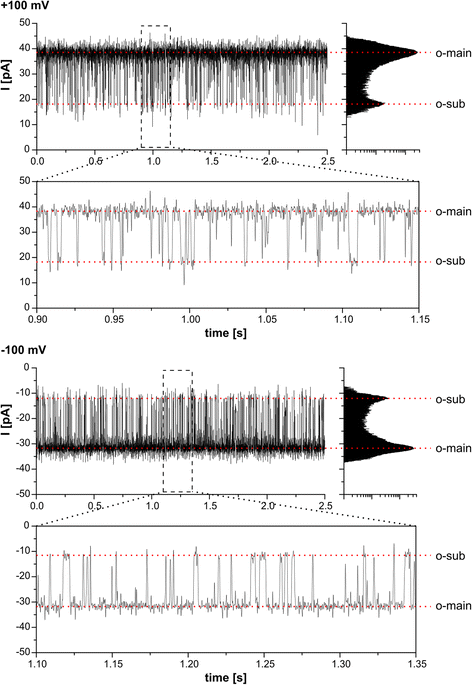
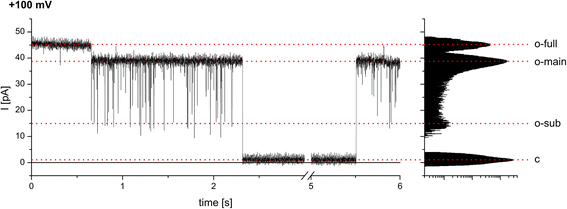
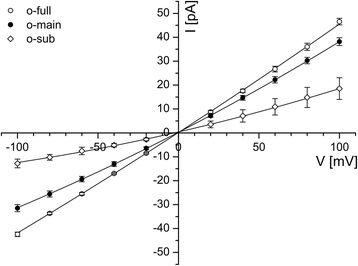
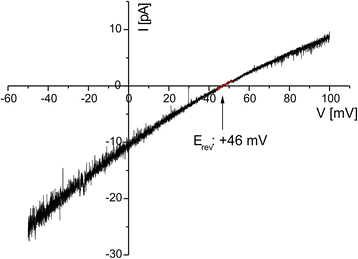
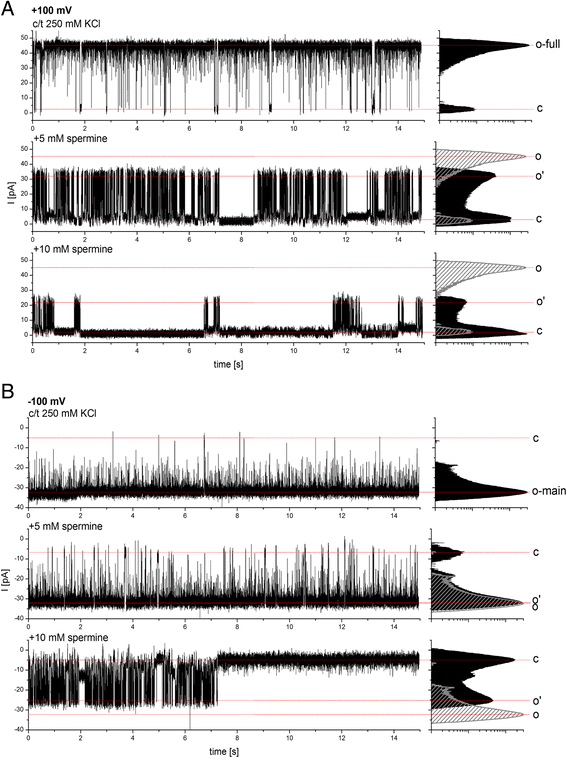
Similar articles
-
A high-conductance solute channel in the chloroplastic outer envelope from Pea.Plant Cell. 1998 Jul;10(7):1207-16. doi: 10.1105/tpc.10.7.1207. Plant Cell. 1998. PMID: 9668138 Free PMC article.
-
Isolation and characterization of an amino acid-selective channel protein present in the chloroplastic outer envelope membrane.Proc Natl Acad Sci U S A. 1997 Aug 19;94(17):9504-9. doi: 10.1073/pnas.94.17.9504. Proc Natl Acad Sci U S A. 1997. PMID: 9256512 Free PMC article.
-
Tic20 forms a channel independent of Tic110 in chloroplasts.BMC Plant Biol. 2011 Sep 30;11:133. doi: 10.1186/1471-2229-11-133. BMC Plant Biol. 2011. PMID: 21961525 Free PMC article.
-
Solute channels of the outer membrane: from bacteria to chloroplasts.Biol Chem. 2007 Sep;388(9):879-89. doi: 10.1515/BC.2007.120. Biol Chem. 2007. PMID: 17696771 Review.
-
Solute pores, ion channels, and metabolite transporters in the outer and inner envelope membranes of higher plant plastids.Biochim Biophys Acta. 2000 May 1;1465(1-2):307-23. doi: 10.1016/s0005-2736(00)00146-2. Biochim Biophys Acta. 2000. PMID: 10748262 Review.
Cited by
-
Properties and Phylogeny of 76 Families of Bacterial and Eukaryotic Organellar Outer Membrane Pore-Forming Proteins.PLoS One. 2016 Apr 11;11(4):e0152733. doi: 10.1371/journal.pone.0152733. eCollection 2016. PLoS One. 2016. PMID: 27064789 Free PMC article.
-
OMPdb: A Global Hub of Beta-Barrel Outer Membrane Proteins.Front Bioinform. 2021 Apr 9;1:646581. doi: 10.3389/fbinf.2021.646581. eCollection 2021. Front Bioinform. 2021. PMID: 36303794 Free PMC article.
-
Pepper mild mottle virus coat protein interacts with pepper chloroplast outer envelope membrane protein OMP24 to inhibit antiviral immunity in plants.Hortic Res. 2023 Mar 15;10(5):uhad046. doi: 10.1093/hr/uhad046. eCollection 2023 May. Hortic Res. 2023. PMID: 37180740 Free PMC article.
-
Structural basis of metabolite transport by the chloroplast outer envelope channel OEP21.Nat Struct Mol Biol. 2023 Jun;30(6):761-769. doi: 10.1038/s41594-023-00984-y. Epub 2023 May 8. Nat Struct Mol Biol. 2023. PMID: 37156968 Free PMC article.
-
Emerging knowledge of the organelle outer membranes - research snapshots and an updated list of the chloroplast outer envelope proteins.Front Plant Sci. 2015 Apr 30;6:278. doi: 10.3389/fpls.2015.00278. eCollection 2015. Front Plant Sci. 2015. PMID: 25983735 Free PMC article. No abstract available.
References
Publication types
MeSH terms
Substances
Associated data
- Actions
LinkOut - more resources
Full Text Sources
Other Literature Sources

